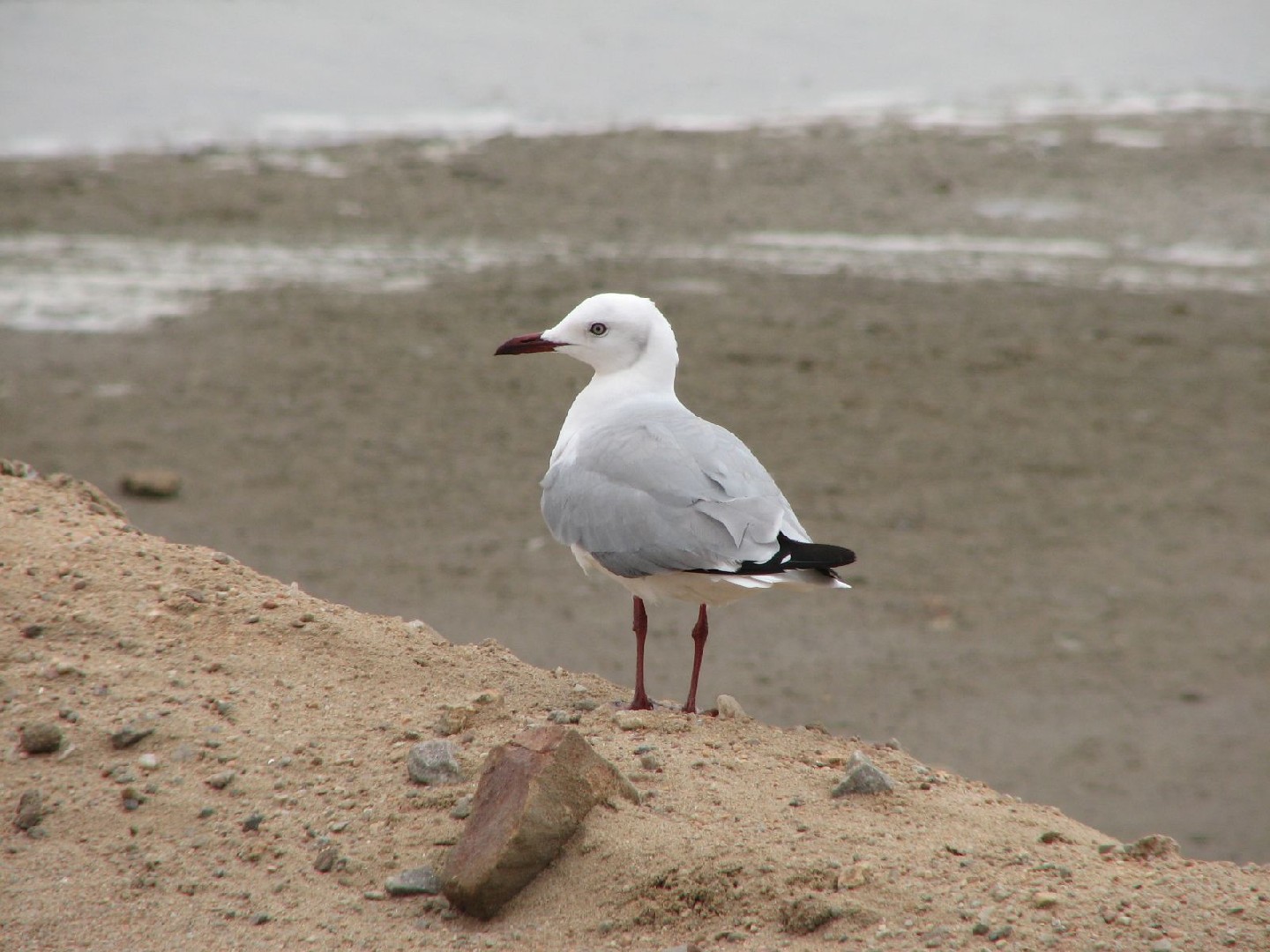Hartlaub's Gull
A species of Masked Gulls Scientific name : Chroicocephalus hartlaubii Genus : Masked Gulls
Hartlaub's Gull, A species of Masked Gulls
Botanical name: Chroicocephalus hartlaubii
Genus: Masked Gulls
Content
Description General Info
 Photo By Alastair Rae , used under CC-BY-SA-2.0 /Cropped and compressed from original
Photo By Alastair Rae , used under CC-BY-SA-2.0 /Cropped and compressed from original Description
Hartlaub's gull (Chroicocephalus hartlaubii), also known as the king gull, is a small gull, which is a non-migratory breeding resident endemic to the Atlantic Ocean coastline of South Africa and Namibia. Although it is predominantly coastal or estuarine, it is not a pelagic species, and is rarely seen at sea far from land. It was formerly sometimes considered to be a subspecies of the silver gull (C. novaehollandiae), and, as is the case with many gulls, it has traditionally been placed in the genus Larus but is now placed in the genus Chroicocephalus. About one half of the total population, currently estimated at about 30 000 birds, are within the Greater Cape Town area. It breeds in large colonies, and the main traditional breeding colony for the Cape Town area is on Robben Island. The adults fly to the mainland to find food for their chicks, a round trip of about 24 km. Hartlaub's gull is 36–38 cm in length. It is a mainly white gull with a grey back and upperwings, black wingtips with conspicuous white "mirrors", and a dark red bill and legs. When breeding it has a very faint lavender grey hood, but otherwise has a plain white head. Sexes are similar. This species differs from the slightly larger grey-headed gull in its thinner, darker bill, deeper red legs, paler, plainer head, and dark eyes. The Hartlaub's gull takes two years to reach maturity. Juvenile birds have a brown band across the wings. They differ from same-age grey-headed gulls in that they lack a black terminal tail band, less dark areas in the wings, darker legs, and a white head. Hartlaub's gull has accommodated well to humans, and can become very tame around habitations. It is an omnivore like most larus gulls, and they will scavenge at tips and feed on scraps as well as seeking suitable small prey, often by wading in shallow water. Although it is a relatively rare species, about the tenth rarest of the world's 50 or so gull species, it is common in its range and is widely regarded in Cape Town as a nuisance, fouling buildings and bathing in urban ponds. It has, at times, been a hazard to aircraft near airports. Like most gulls, it is highly gregarious in winter, both when feeding or in evening roosts. This is a noisy species, especially at colonies. The call is a raucous crow-like kaaarrh. This species is frequently the subject of complaints about the noise it makes in urban areas. This species’ name commemorates the German physician and zoologist, Gustav Hartlaub. 
Size
39 cm
Colors
Black
Gray
White
Life Expectancy
26 years
Nest Placement
Ground
Feeding Habits
Hartlaub's Gull primarily consume fish and aquatic invertebrates, foraging along coastlines and open water. These birds showcase unique adaptations for surface seizing or diving. Feeding occurs during the day, often taking advantage of food resources associated with human activity.
Habitat
Hartlaub's Gull primarily resides in coastal regions, frequenting environments such as harbors, seaside cities, and wet grasslands. Its choice of breeding grounds often includes flat, low-lying islands, which may be naturally occurring or artificial, such as dykes in sewage lagoons and salt works. Occasionally, hartlaub's Gull nests on buildings. The species is known to thrive within urban areas, extending its range up to 50 kilometers inland from coastlines. It is also observed foraging in inland locations like flooded agricultural fields, adapting to feed during nighttime.
Dite type
Piscivorous
General Info
Feeding Habits
Bird food type
Scientific Classification
Phylum
Chordates Class
Birds Order
Shorebirds Family
Gulls Genus
Masked Gulls Species
Hartlaub's Gull